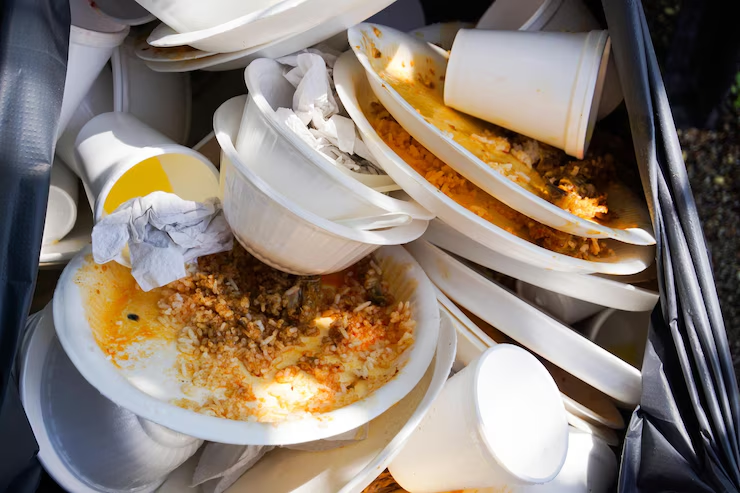Food waste remains a major global challenge, impacting the environment, economy, and society. In bustling urban centers like Chinatown, hawker stalls serve as vibrant hubs of local cuisine and culture. Yet, these food spots often face the dilemma of leftovers, which could lead to significant waste. Fortunately, chinatown hawker leftovers consumption offers a promising solution. This article explores how consuming hawker leftovers in Chinatown helps reduce food waste, benefits the community, and promotes sustainability.
Understanding Chinatown Hawker Leftovers Consumption
What Are Hawker Leftovers?
Hawker leftovers refer to unsold or leftover food items at hawker stalls, which are common in places like Chinatown. These leftovers arise from overproduction, fluctuating customer demand, or timing mismatches. Normally, hawker stalls must discard these leftovers by the end of the day due to food safety concerns and hygiene regulations.
Why Does Leftover Food Matter?
Discarding edible food contributes heavily to food waste. According to global statistics, about one-third of food produced worldwide is wasted. In Chinatown’s hawker centers, the volume may seem small individually but adds up over time. This not only wastes resources like water and energy but also increases landfill waste and greenhouse gas emissions.
The Role of Chinatown Hawker Leftovers Consumption in Waste Reduction
How Consumption of Leftovers Works
Recently, some hawker stalls and community groups have begun encouraging leftover consumption. This practice involves selling or redistributing leftover food at discounted prices or donating it to local shelters and needy individuals. Such initiatives ensure that food is utilized instead of thrown away.
Economic Benefits for Hawkers
By promoting chinatown hawker leftovers consumption, hawkers can recover some of their costs. Selling leftovers at reduced prices attracts price-sensitive customers and helps stall owners avoid total losses. Moreover, this reduces waste disposal costs, which can add up, especially for small business owners.
Environmental Impact
Reducing food waste lowers environmental footprints. When hawker leftovers are consumed instead of discarded, less organic waste ends up in landfills, where it produces methane—a potent greenhouse gas. Thus, leftover consumption directly contributes to climate change mitigation efforts.
Community Engagement and Social Benefits
Supporting Vulnerable Groups
Leftover food distribution programs in Chinatown help feed low-income individuals, elderly residents, and the homeless. This not only fights hunger but also strengthens community ties. Such efforts show how chinatown hawker leftovers consumption serves as a social equalizer, providing affordable meals to those in need.
Encouraging Awareness and Responsible Consumption
Community-driven leftover consumption raises awareness about food waste and responsible eating habits. People learn to value food more and avoid over-ordering. As a result, customers become active participants in waste reduction.
Challenges in Chinatown Hawker Leftovers Consumption
Food Safety Concerns
One of the biggest challenges is ensuring leftover food remains safe to eat. Hawker stalls must follow strict hygiene standards to prevent contamination. To overcome this, leftover consumption programs often include quality checks, proper packaging, and timely redistribution.
Cultural Perceptions
In some cultures, leftover food consumption may carry stigma. People might view it as “second-rate” or unhygienic. Overcoming these perceptions requires education and positive messaging about sustainability and community support.
Regulatory Barriers
Local food safety laws sometimes restrict the resale or donation of leftover food. Advocates for leftover consumption are working with authorities to create clear guidelines that allow safe redistribution without legal risks for hawkers.
Innovative Practices Promoting Hawker Leftovers Consumption
Leftover Food Apps and Platforms
Technology plays a key role in connecting hawkers with consumers interested in leftover food. Apps designed for food sharing or discounted sales facilitate quick transactions, reducing the time food spends unused. These platforms increase accessibility and awareness.
Partnerships with Charities
Several Chinatown hawker centers partner with NGOs and food banks to channel leftover food to those in need. This collaboration streamlines collection and distribution, ensuring food reaches beneficiaries efficiently.
Educational Campaigns
Workshops and campaigns educating hawkers and consumers about the value of leftover consumption encourage wider adoption. These initiatives help normalize leftover consumption and reduce food waste stigma.
The Future of Chinatown Hawker Leftovers Consumption
Scaling Up the Practice
With growing awareness of food waste, more hawker centers in Chinatown and beyond may adopt leftover consumption. Scaling up requires infrastructure improvements, such as better storage and transportation, and policy support.
Integration with Circular Economy Principles
Leftover consumption fits well within circular economy models, where waste is minimized and resources reused. Encouraging hawker leftovers as part of broader sustainability strategies can amplify their impact.
Encouraging Consumer Participation
Consumers hold significant power in driving leftover consumption. By actively seeking leftover deals or supporting donation programs, they help sustain hawker businesses and reduce food waste.
Conclusion
Chinatown hawker leftovers consumption plays a vital role in reducing food waste while supporting economic, environmental, and social goals. This practice benefits hawker owners, customers, and vulnerable community members alike. Despite challenges related to safety and cultural attitudes, ongoing innovations and partnerships show promise for growth. Moving forward, continued efforts to promote leftover consumption will help make Chinatown’s vibrant food scene more sustainable and inclusive.



